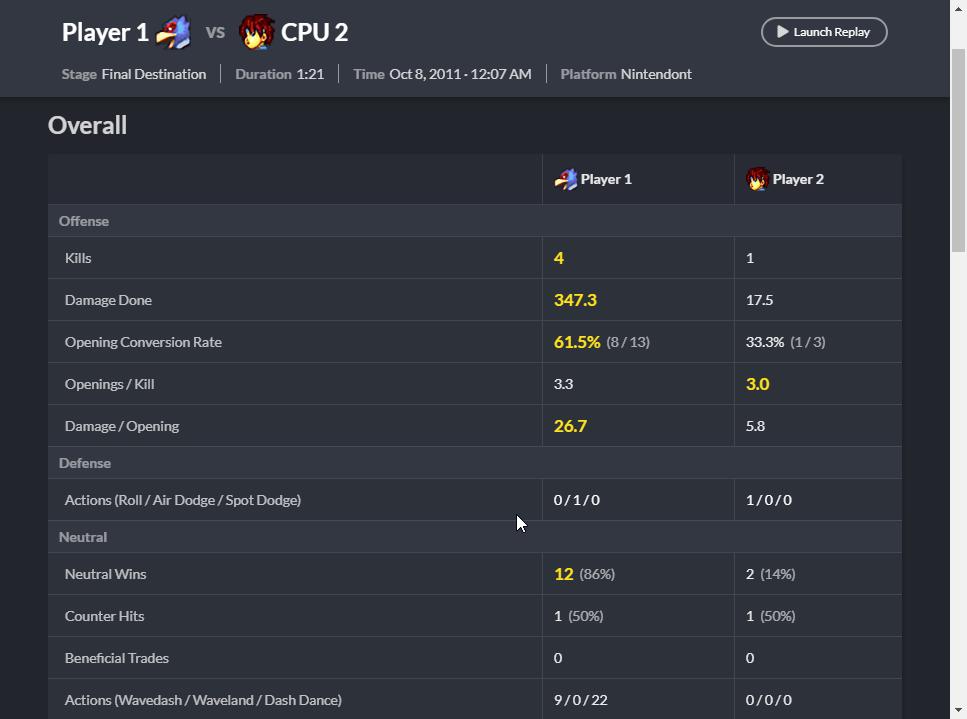From Sweden to America, Project Slippi has bounced across an ocean and back and has changed how we engage with Super Smash Bros. Melee. The open source project attemps to create a replay infrastructure for a game never designed to have one.
Since Phoenix Blue’s broadcast of Project Slippi, tournaments have wanted to get their hands on the new software. Project Slippi had been announced at ‘The Gang Steals the Script’, the first North American event to broadcast it. EndGameTV— who are running the event — have added that each setup with the replay feature on hand and the mainstream broadcast will not only show the HD presentation but the statistics provided by the software too. Pound 2019 also used Project Slippi with positive feedback flooding in about the quality of the program. With software now debuting at larger tournaments, creator Jas ‘Fizzi’ Laferriere, a Software Engineer at smashgg, told us more about his project and what he aims to achieve with the upcoming modification.
Tell us a little bit about yourself and your background
My name is Jas Laferriere. I was born in French-speaking, Quebec, Canada. I moved to the States at age 7 and learned English very quickly. I was fascinated by video games from a young age; Donkey Kong Country is the very first game I owned on SNES. Having a great curiosity for how it worked, I always knew I wanted to study Electrical/Software/Computer Engineering growing up.
I ended up going to McGill University studying Computer Engineering, and during my freshman year, Brawl was released. I had always loved the Smash games growing up though I had never heard of the competitive scene. When I went home for summer vacation, I found out one of my friends from high school had gotten into competitive Melee and was interested in going to a Brawl tournament. I went with him, got destroyed by Mew2King, and have been involved in competitive Smash since. Eventually, I was introduced into Melee proper by the Montreal smash scene and received some mentorship from Chesterr01. I developed a deep love for the game that continues to this day.
Project Slippi has been gaining some social media traction and interest from Melee competitors. Can you explain more about Project Slippi?
Project Slippi at its core aims to kickstart an ecosystem of software for creating and interacting with data-rich Melee replay files. It aims to bring Melee data that has been trapped in the game for so long into a place where anyone can use it.

What results do you hope will come from this software? What do you want to accomplish?
I want to provide context for that it might be worth mentioning what has already been accomplished. At HTC Throwdown, an early hardware version of Slippi (before it was called that) powered the very first post-set stat display. This included complex concepts like edge guards and combo strings. Going forward, I would like for new stats to become easier to implement and to improve the way we analyse and talk about Melee.
A long time after (did not do much Slippi work for about two years after starting my job at smash.gg) I was able to create a Dolphin build that could automatically extract .slp replay files, a format I created, which housed all of the data I had previously used to compute stats on hardware. I then built a desktop app that could take these replays and watch them back in Dolphin. That meant that people could now play netplay and automatically save their gameplay without having to record it. What’s more, they could browse all the stats that could be computed from the extracted data.
SEE ALSO: ELEAGUE to partner with Nintendo for Smash Bros. Ultimate broadcast
Most recently at Phoenix Blue 2, Pound 2019, and more, Slippi’s playback system was used on live console gameplay to increase the stream quality well beyond what was previously possible. There’s a lot that can be done to improve production by using live-data and enabling that will be a continued focus of the project.
More generally though, what I would still like to accomplish includes making it easier to improve Melee gameplay production, create tools to enable things such as analyst desks and improve the archiving and searchability of Melee matches. I’d also like to improve the overall access to tournament statistics by character and player and for players to be able to track which player has the best punish game of the 2019 season. Lastly, I want stats to show up on stream that feeds into the narrative of the current on-going match, and I want people to be able to browse and find out which aspects of their game players should focus on to win the Fox vs Puff matchup, for example.
It seems like you have a lot in mind for the future of the software! Which features do you have on your priority list?
I want to work on making playing replays feel more like watching a video in terms of being able to skip to any point in the replays, go back, etc. Following that, I’d like to start working towards player stats on slippi.gg as mentioned in the previous answer.

What made you decide to make this software?
I worked on some smaller-scale Melee projects before this one. I made a 4-port Gamecube to USB adapter before there was an official adapter, I built tools to objectively test monitor lag to determine if they were usable for Melee and I created Challonge Match Display to make running tournaments a bit easier in the time before smash.gg
The root of the idea for Slippi, however, can be traced back to a hangouts call I was on with Shan (CEO of smash.gg) and Juggleguy (Head TO of Big House). I don’t remember exactly why I was on the call, but I somehow got on the topic of how it would be cool to automatically extract stats in the game. My initial thinking was that it was impossible, but after I got off the call, I started thinking. I started thinking that perhaps I actually could pull it off. So I drafted an email to Shan and Rob detailing the “Melee Tournament of the Future”. In it, I bring up a hypothetical scenario that includes hardware-enhanced functionality added to Melee to automate tournament setups via smash.gg data, RFID readers, etc. This email was sent on June 16th, 2015. I think even now there’s stuff in that email that people have never considered, amusingly it sounds more plausible now than it did then.
Been helping out @Fizzi36 make a lightweight visualiser for #ProjectSlippi replays, that you can play right in the browser! Check out the prototype https://t.co/O7xWi6jHFA pic.twitter.com/GnUWs6TI8y
— schmoo (@schmooblidon) April 4, 2019
Anyway, that call and email sparked my thinking, and I started trying to make it happen. Eventually, this culminated in a memory card slot hardware device and post-set stats at HTC Throwdown on Sept 19, 2015. From there, it was just a matter of continuing to push what was possible. The big idea that made me believe I could make this stuff really accessible was when I realised the Nintendont emulated memory cards on Wii and it might be possible to create an emulated Slippi device that used the Wii’s hardware instead of custom hardware (this is the version in existence today).
You previously mentioned your history in getting into the Smash community. Have you worked on any other big projects previous to this since you’ve been a part of the community?
I mentioned a few other smaller-scale projects. In terms of big projects, I’m not sure if I’ve ever led anything quite on the scale of Project Slippi before. I suppose this is also an excellent time to thank all the contributors to Slippi. Specifically, I want to shout out UnclePunch and metaconstruct. The project very likely wouldn’t be in the state; it is now if it wasn’t for them.

